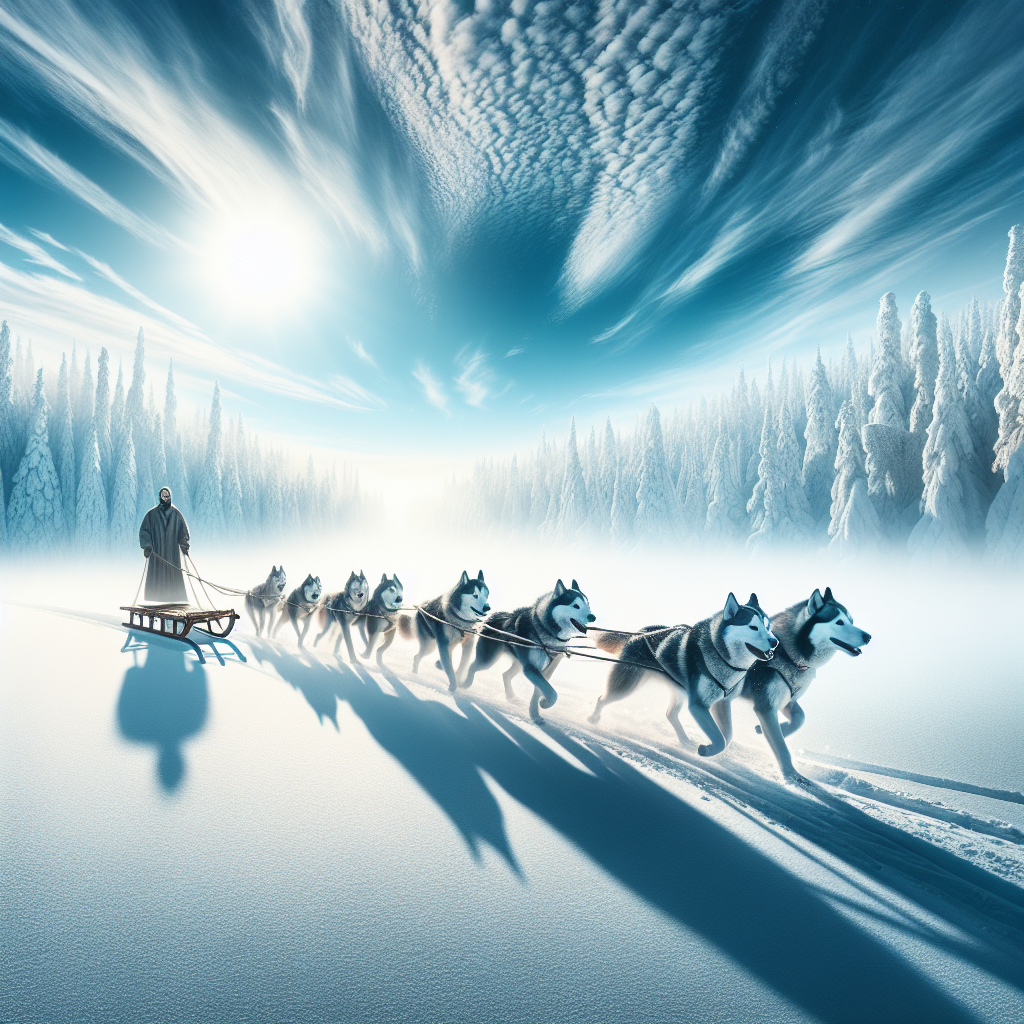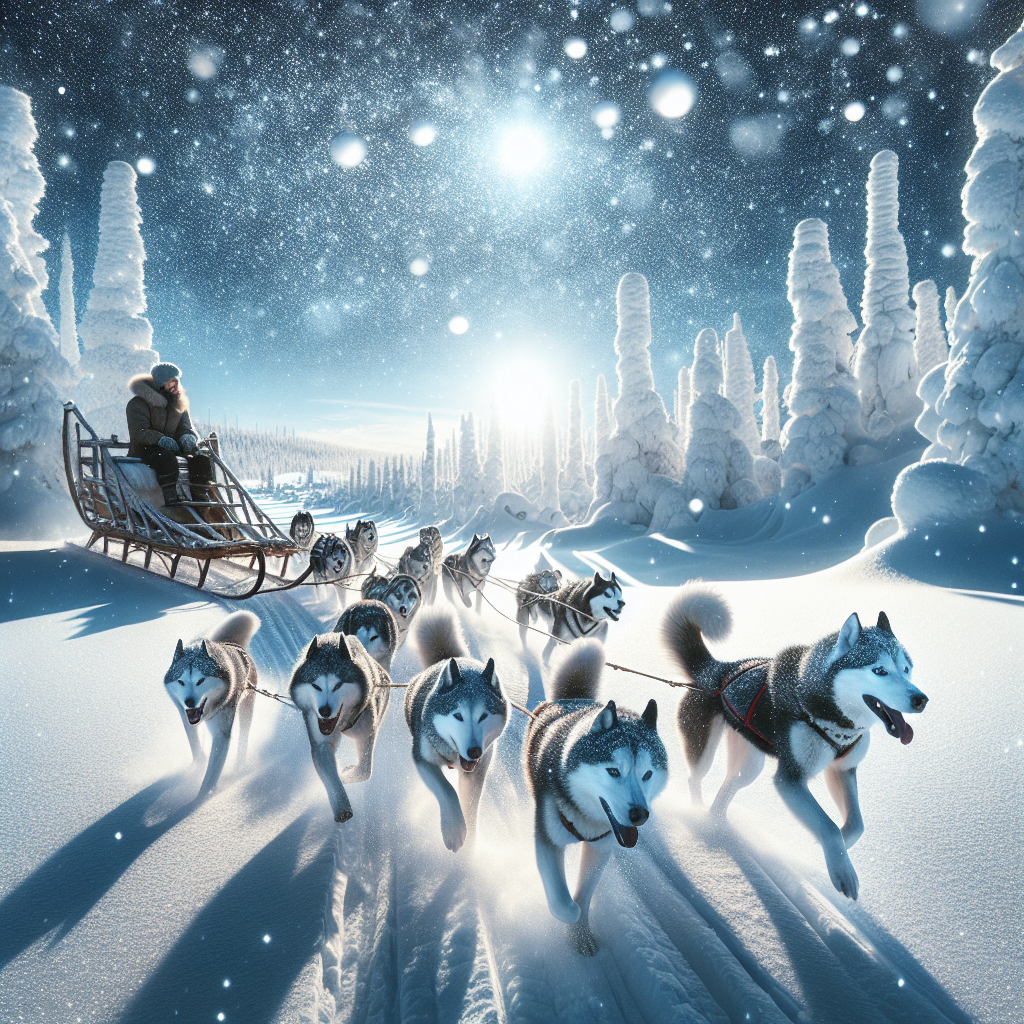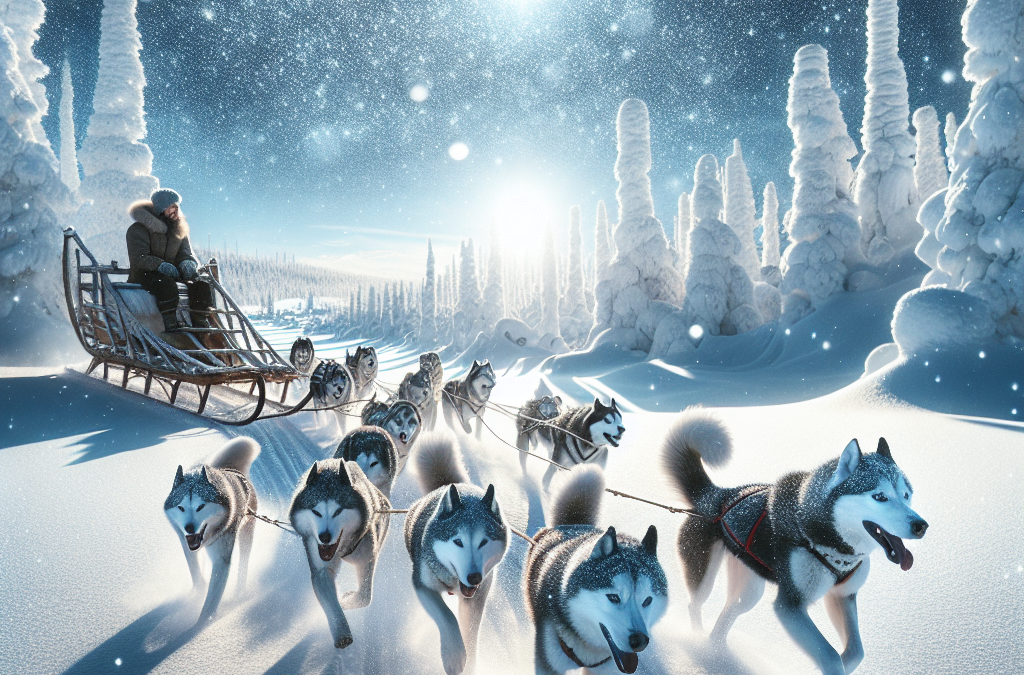Are you ready to embark on a thrilling adventure across snow-packed terrains, guided by the power of eager and vivacious sled dogs? The Essential Guide to Dog Sledding is your comprehensive ticket to understanding this exhilarating activity. With this guide, you’ll come to appreciate the rhythmic harmony between humans and dogs as they navigate through frosty landscapes. It’s time for your frosty adventure to begin!

Understanding the Basics of Dog Sledding
Dog sledding is a fascinating world steeped in history and embraced by those who appreciate the thrill and camaraderie of sharing an adventure with four-legged friends. As you embark on your journey into this exhilarating world, let’s break down the basics to help you get started.
Definition and Brief History of Dog Sledding
Dog sledding, also known as mushing, involves the use of one or more dogs to pull a sled over snow or ice. This practice originated in regions with heavy snowfall where dogs provided an efficient and reliable mode of transport. The word ‘mushing’ comes from the French term ‘marchons’, which translates to ‘let’s go’. While primarily a mode of transportation in bygone eras, dog sledding has now evolved into a popular sport and recreational activity.
The Role of Dogs in the Sport
In dog sledding, dogs play the most critical role as they are the engines that power the sled. They pull the sled under the direction of a musher, who steers the sled and gives commands. These dogs are not merely pets but are highly trained athletes. Famous for their endurance, speed, and strength, sled dogs can cover long distances in harsh winter conditions.
Popular Dog Breeds for Sledding
Certain breeds are more suited to dog sledding due to their physical attributes and natural instincts. The Siberian Husky and Alaskan Malamute are favorites among mushers due to their stamina, resilience to cold, and eagerness to run. Alaskan Huskies, though technically not a recognized breed, have been bred for generations for their sledding capabilities. They’re a mix of various breeds chosen for specific qualities, like a keen sense of direction or an ability to withstand cold temperatures.
Required Equipment and Gear for Dog Sledding
Just like any sport, dog sledding requires specific equipment and gear. Understanding the importance and purpose of each item ensures the safety and comfort of both you and your sled dogs.
Different Types of Dog Sleds
The two main types of dog sleds are basket sleds and toboggan sleds. Basket sleds are lightweight with a basket frame suspended above the runners, ideal for racing or fast trail conditions. Toboggan sleds have a flexible bottom designed to conform to the terrain, making them well-suited for heavy loads or softer snow conditions.
Harnesses and Lines
The dogs wear specially designed harnesses connected by lines or ropes to the sled. The harness distributes the weight evenly across the dog’s chest and shoulders, allowing them to pull comfortably and efficiently. The central line, known as the gangline, connects all dogs to the sled, with individual lines (tugs and necklines) securing each dog.
Safety Gear for Mushers
Mushers need safety gear too, including helmets, gloves, goggles, and suitable footgear to protect them from the elements. Additionally, a snow hook (like an anchor) can be lodged into the snow to brake or hold the sled stationary when needed, while a driving bow provides the musher something to hold or lean against for balance.
Clothing and Protection for Dogs
In extreme conditions, dogs may wear booties to protect their paws against ice, sharp ice, or salt. Insulated dog coats can provide added warmth for dogs during rest breaks or in extremely cold environments.
The Process of Training Sled Dogs
Training sled dogs is an ongoing process that encompasses not just physical conditioning but also discipline and teamwork.
Basic Training Techniques
Begin training pups as early as possible. Start with leash training and teach them to be comfortable wearing harnesses. Encourage team play and socialize them with older, trained dogs.
Teaching Commands
Voice commands are crucial. Dogs respond to specific words signifying commands like start (‘hike’), turn (‘gee’ for right, ‘haw’ for left), stop (‘whoa’), and slow down (‘easy’).
Conditioning and Endurance Training
Just like human athletes, sled dogs require a regimen of conditioning and training. This involves gradually increasing distance and weight to improve stamina and strength. Always monitor your dogs for signs of fatigue or stress.
Behavioral Management and Socialization
Positive reinforcement is key in training sled dogs. They should also be socialized to work as a team and be comfortable around other dogs and humans.
Important Health Considerations for Sled Dogs
Maintaining the health of your dogs is paramount. Remember, healthy and happy dogs are the backbone of successful dog sledding.
Routine Check-Ups and Vet Care
Regular vet visits are essential to assess the general health of your dogs and to catch any potential health issues early.
Nutritional Requirements
Sled dogs need a high-calorie diet due to the physical demands of mushing. Special performance dog foods can provide the necessary nutrition, coupled with plenty of fresh water.
Common Health Issues in Sled Dogs
Watch for common health issues like injuries to the paws, exhaustion, and frostbite. Respiratory issues can also occur due to intense breathing in cold temperatures.
Exercise and Rest Schedules
Dogs need time to rest and recover. Ensure a good balance of exercise and downtime. Dog massages can also aid in relaxation and muscle recovery.

The Role and Responsibilities of the Musher
The musher plays a critical role in dog sledding, from dogs’ care to steering the sled.
Skills Needed to Be a Successful Musher
Mushers need physical strength to control the sled and resilience to endure harsh conditions. Additionally, understanding dog behavior, first aid skills for dogs, and a love for the outdoors is crucial.
Establishing Trust with the Dogs
Building trust with your dogs is essential. Dogs need to trust their musher in order to follow directives and work as a team.
Ensuring Dog Welfare and Safety
Ensuring the safety and welfare of your dogs is paramount. This includes maintaining their health, providing proper nutrition, and taking care of their emotional well-being.
Management of the Team During Rides
During rides, monitoring dogs for signs of fatigue or injury, knowing when to rest or press on, and navigating the trails are all part of a musher’s responsibilities.
Preparing for Your First Dog Sledding Expedition
Proper planning and preparedness can ensure that your maiden dog sledding expedition is a successful one.
Planning the Route
Choose a route that suits your experience level and is right for your dogs. Take note of potential rest stops and check-points.
Packing the Right Supplies
Pack enough food and water for both you and your dogs. Other essentials can include a first aid kit, extra harnesses, and a portable dog shelter.
Weather Considerations
Monitor the forecast and prepare for changing weather conditions. Know the signs of a looming storm and be prepared to take shelter if necessary.
Emergency Preparedness
Prepare for emergencies by knowing the necessary survival skills and having an emergency plan. This could include knowing the nearest shelter or having an emergency contact.
How to Participate in Dog Sledding Races
Participating in a dog sledding race can be an exhilarating experience. It’s important to understand the rules and ensure that your team is adequately trained.
Understanding Race Rules and Regulations
The guidelines can vary depending on the race. Familiarize yourself with the rules regarding equipment, dog welfare, and conduct on the trail.
Training for a Dog Sledding Race
Training for a race involves not just physical conditioning, but also working on team dynamics and response to voice commands under pressure.
Registering for Races
Each race has its own registration process. Be sure to check deadlines, requisite paperwork, and entry fees.
Race Strategies and Techniques
Strategies can range from setting a steady pace to saving energy for a final sprint. Adjust your technique based on the race length, terrain, and your dogs’ strengths.
The Ethical Aspects of Dog Sledding
Remember, dog sledding involves living beings. Ethical considerations should always be at the forefront.
Balancing the Sport with Animal Welfare Concerns
Balancing the sporting aspect of dog-sledding with welfare concerns is the cornerstone of ethical mushing. Never push your dogs beyond their limits.
Controversial Aspects and Criticisms of Dog Sledding
Due to concerns like overexertion and the natural environment of dogs, dog sledding faces criticism. As a musher, make sure to maintain transparency and practice sincere animal care.
Promoting Humane Practices in the Industry
Promote and uphold humane practices. From proper care of dogs to respecting the environment, let’s promote a culture of kindness and respect in the industry.
Popular Dog Sledding Destinations
There are numerous stunning locations worldwide, offering fabulous dog sledding trails.
Dog Sledding in Alaska
Alaska, with its snowy landscapes, is a premier destination for dog sledding. The world-renowned Iditarod Trail Sled Dog Race takes place here.
Exploring Canadian Destinations
Canada, with its diverse trails ranging from the forests of Quebec to the mountains of Yukon, is famed for exhilarating mushing experiences.
European Dog Sledding Routes
In Europe, countries like Norway, Sweden, and Finland offer fantastic dog sledding opportunities amidst their scenic winter landscapes.
Events and Festivals Around the World
Other destinations also host dog sledding events and festivals, turning this profound experience into a celebration of culture and tradition.
Breaking Down Dog Sledding Jargon
Every sport comes with its lingo, and dog sledding is no exception.
Commonly Used Terms in Dog Sledding
Terms like ‘musher’, ‘gangline’, ‘harness’, and calls like ‘gee’, ‘haw’, ‘hike’ and ‘whoa’ are used frequently in the world of dog sledding.
Understanding the Lingo
Getting familiar with the terminology will help you communicate effectively with other mushers and also build a stronger bond with your dogs.
Role of the Hierarchy in a Dog Sled Team
Dogs have their positions to play in the team, and the terms like lead dogs, swing dogs, team dogs, and wheel dogs reflect their places in the formation.
Interpreting Dog Behavior and Signals
Learning about dogs’ signals and behaviors will be crucial in understanding their physical state and forming effective communication with them.
Dog sledding is an enriching journey, binding mankind and nature in enigmatic ways. As you embrace this incredible sport, always remember the golden rule – the journey is as important, if not more, than the destination. Happy mushing!

